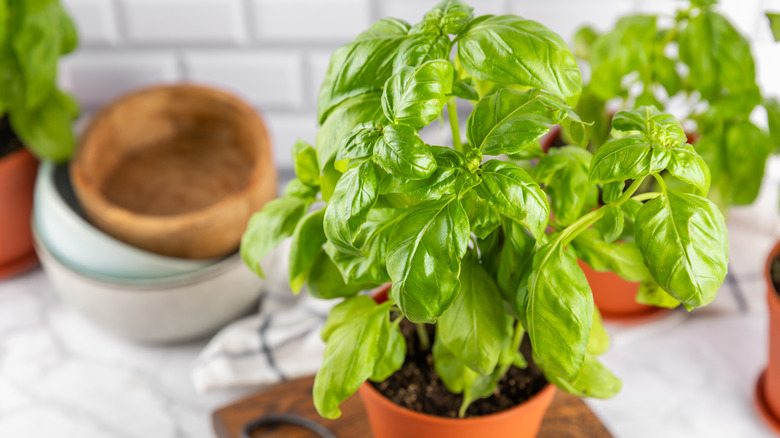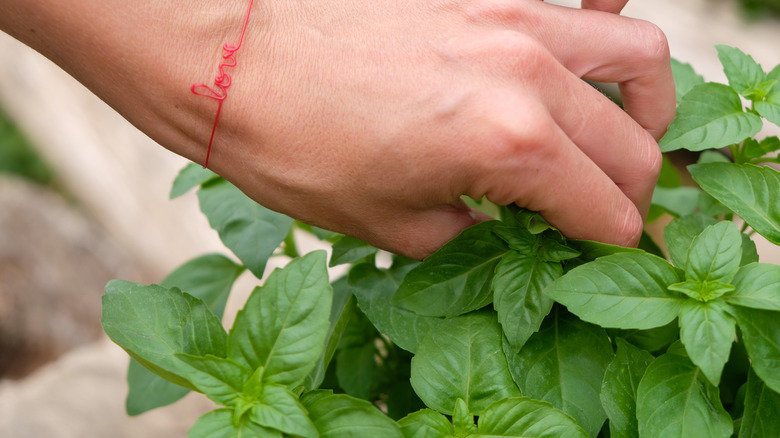The Simple Growing Hack To Stop Basil From Getting Leggy
The basil plant (Ocimum basilicum) is known for its distinctive smell, and of course, its inclusion within a multitude of food recipes. But as a grower, you may sometimes find that your plant has grown more "legs" than leaves. A basil plant that grows tall with only a few leaves here and there simply isn't as in demand as one covered in voluminous, healthy leaves. So how can you prevent your basil plant from stretching itself too thin ... literally? Simple — just pinch it.
Pinch and break off of the main stem just above the first set of leaves to stimulate a re-branching process in the plant. In other words, two branches will grow right beneath the area that you've broken off. When pinching the basil, be sure to leave about 1/4 inch or less of stem so the below leaves and axils aren't damaged.
Basil plants, depending on the variety, can grow to anywhere between 8 to 24 inches in height. If your plant becomes leggy, wait until it's at least 6 to 8 inches tall before pinching it down. By this time, a healthy basil plant should have a sufficient number of leaves and a more established stem. Pinching your basil is also a proven way to delay its flowering. This is beneficial if you're growing basil to use as an herb for cooking, as the flowering process can reduce the plant's sweet and savory flavor.
Additional helpful tips for growing and maintaining basil plants
Many basil varieties used in cooking grow in USDA hardiness zones 10 and 11. These plants love moist, well-draining, and loamy soil packed with nutrients. If growing and taking care of basil in a container, ensure you have sufficient holes on the bottom to prevent waterlogging. Basil responds well to regular watering sessions; touch the soil with your finger to ensure the top inch of dirt is always moist. Experts recommend a biweekly or monthly feeding to maintain the soil's fertility. Consult your fertilizer instructions for dosage instructions.
Overcrowding can lead to diminished growth, so place your plants anywhere from 8 to 12 inches apart. It's a good companion plant for many plants, too, as basil's strong scent helps deter pests. Common houseplant pests like spider mites and aphids might still arrive, but they can easily be eradicated with a spray of insecticidal soap or neem oil.
Basil is an annual plant but can easily be grown indoors year-round with a grow light. On average, basil requires six to eight hours of natural sunlight; with a grow light, it requires around 12 hours a day. Note that while basil isn't considered an invasive or aggressive herb, the holy basil variety is, so be sure to prune the plant regularly and monitor its growth. You can expect a healthy indoor basil to live as long as four years. Be sure to check out our other tricks and tips for successful basil growth.

